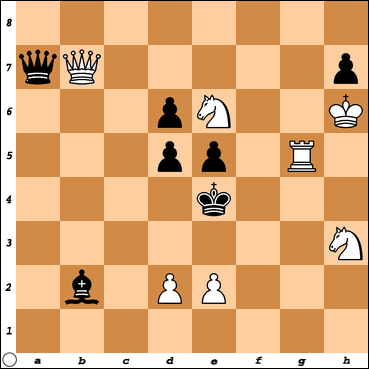This is answered in Sir Jeremy Morse's Chess Problems: Tasks and Records, already cited by Professor Elkies. In paragraph 2.4, Morse says "The record for the total number of different White mates (and hence of variations also) in the two-mover is 24, shown in 1, with multiple threats but only a few minor duals." (The problem Morse refers to is the same one in the 1st edition, published 1995, and the 3rd, published in 2016; I show it below.)
If the duals are removed, 24 dual-free lines remain, ending in 24 different mates.
[Title "Nenad Petrovic, The Problemist, 1946. #2"]
[FEN "Q7/7P/3p2p1/2P1R3/1KN2pqp/1P4p1/r3P3/kr5R w - - 0 1"]
1. h8=Q! Ra7 2. Qxa7#
(1... Ra6 2. Qxa6#)
(1... Ra5 2. Qxa5#)
(1... Ra4+ 2. Qxa4#)
(1... Ra3 2. Qxa3#)
(1... Rxh1 2. Qxh1#)
(1... Rxa8 2. Qxa8#)
(1... dxe5 2. Qxe5#)
(1... Qf5 2. Rxf5#)
(1... Qg5 2. Rxg5#)
(1... Qh5 2. Rxh5#)
(1... Qe6 2. Rxe6#)
(1... Qd7 2. Re7#)
(1... Qc8 2. Re8#)
(1... d5 2. Rxd5#)
(1... dxc5+ 2. Rxc5#)
(1... f3 2. Re4#)
(1... Qf3 2. Re3#)
(1... Qxe2 2. Rxe2#)
(1... Rg1 2. Rxg1#)
(1... Rf1 2. Rxf1#)
(1... Re1 2. Rxe1#)
(1... Rd1 2. Rxd1#)
(1... Rc1 2. Rxc1#)
So here we have the idea "line-pinned black line-piece moves away from black king; white pinner captures it" on a rank and on a file, as in Dag Oskar Madsen's and Prof. Elkies's problems, but not also on a diagonal. Instead, in 11 variations, White's other rook is used to discover a diagonal check, and must choose its destination accurately, either to interfere on the line a Black unit threatens to interpose on, or to capture that unit. Black uses a variety of means to make only one square work. wPe2 prevents 1. ... Qd1 and avoids a dual after 1. ... Re1.

